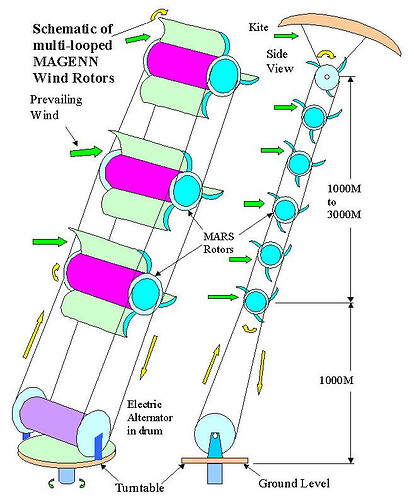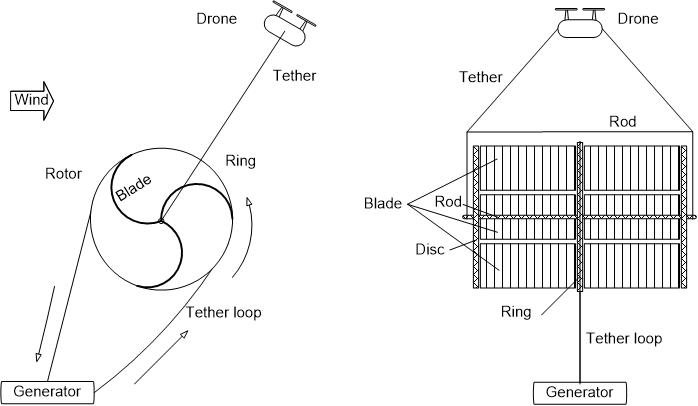[quote=“kerati, post:8, topic:2628”]
Yes, Savonius is not too efficient. But the „fuel” is costless, and the inefficiency can be compensated by inceasing the size (larger blades). Or it can be replaced by a Darrieus one (increases TSR but needs more expensive rotor blades).
People from outside of the world of wind energy, especially if they know they are “smart”, such as being a mathematician, for example, tend to assume their initial first impressions of the factors involved in wind energy are a correct interpretation, but in fact, it is almost worse to come in knowing you are “smart”, due to this tendency to assume your first impressions are accurate.
OK the fuel is costless, right? Everybody knows that about wind energy (although the land, tower, taxes, installation, interconnection, ongoing labor and maintenance costs, and the cost of the apparatus itself are not free, so yes, no fuel needed, but wind energy can still be very expensive).
But just pointing out the already-known fact that the “fuel” is costless does not negate the facts of wind turbine design, cost, longevity, material used, etc. How many Savonius turbines do we see in windfarms around the entire world? Not one. Why? Because they may look cheap to the uninitiated, but they cost more per unit power, so they are never used. Why do they cost more? First, the active surfaces travel WITH the wind, reducing relative speed, lowering the power to about 1/4th of what a regular turbine would make in the same space. But that’s only one half of the machine. The other half is traveling upwind, USING power, so you end up with a paltry fraction of the available power, but it gets worse:
Every place gets storms. Even solar panels need to be constructed and mounted to withstand 100 mph winds. So constructing a Savonius from light materials is likely to result in destruction in the first storm.
There is a whole, predictable “syndrome” here, and the next typical step is for the inventor to say “Well, we’ll just take it down when strong winds are predicted.” But
- the whole point of wind energy installations is to minimize manpower required, and
- wind predictions are notoriously inaccurate. Just the other night, we had winds of 18 MPH predicted all night long. Instead it was more like 30 MPH, and our 10 kW turbine was making a lot of noise, and I checked the inverter to see over 11 kW being produced. This would have destroyed a lightly-built turbine.
- You could also take down your apparatus, expecting a storm, but instead you get the most productive winds of the year.
- For the most part, any wind energy installation needs to be “set it and forget it” in terms of being able to survive storms even if there is nobody there to babysit the installation.
Anyway, like the story of, what was it, The Three Little Pigs(?) where the Big Bad Wolf said “I’ll huff and I’ll puff and I’ll blow your house down!” - the house made of straw blew away, the house made of sticks blew away, with only the house made of bricks still standing.
Anyone who has built any new wind energy device and run it for any time at all, will know this happens repeatedly to any new installation, requiring multiple modifications over years, until you get it right. Using large sheets of thin plastic is not going to accomplish this.
The reason regular propeller-style rotors are the result of 3000 years of wind turbine design evolution is it uses the least material to gather the most energy, and tends to survive, and even then, survival remains a challenge.
Regarding machines using Darrieus-principle blades, they always break down eventually (within a year for the best examples), are less efficient per unit of intercepted area, and require literally many times the blade material of regular propeller-style turbines, for the same power, because they need to “sweep” 3.14x the intercepted area.
Look at this piece of junk,
55kW Vertical Axis Wind Turbine | Renewable On-Grid & Off-Grid Energy (ryse.energy)
and imagine how many regular propeller-style turbines of the same or larger size you could build using the same amount of blade material! I’d guess you could get maybe 5 or 6 regular turbines, some sweeping even more area, from the incredible amount of blade material going into this vertical-axis (Darrieus?) turbine. And I doubt you could find many, if any, actually operating at this moment. With forces reversing twice with every rotation, they don’t last long. I posted a photo here before of one down the street from me that looked indestructible, but in a storm, it lost a blade - in less than a year. The Italian winery owner whose house it was installed at was so disgusted he left California and moved back to Italy





